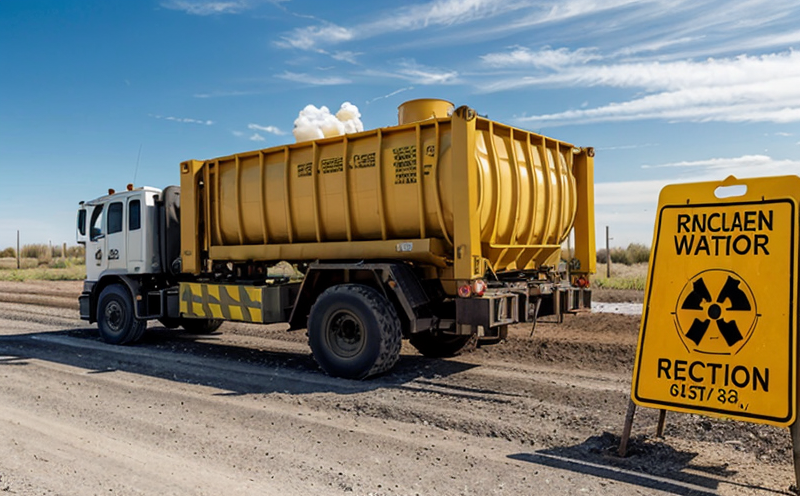IAEA Safety Standards for Geological Disposal of Radioactive Waste
The International Atomic Energy Agency (IAEA) has established a comprehensive set of safety standards that are pivotal in guiding the geological disposal of radioactive waste. These standards, derived from international consensus and expert knowledge, provide a framework to ensure the safe and secure management of hazardous materials deep underground.
The IAEA’s Safety Standards Series is recognized globally for its rigorous approach to nuclear safety. The relevant standard for geological disposal focuses on ensuring that such repositories can be relied upon to contain radioactive waste effectively over long periods. This involves stringent design, construction, operation, and monitoring criteria aimed at preventing any potential risks to the environment or human health.
The standards emphasize the importance of site selection, which includes thorough geoscientific investigations to identify suitable locations for deep geological repositories. These sites must be capable of providing a natural barrier against the migration of radioactive materials into the biosphere. The design phase then follows, where structures are engineered not only to withstand the rigors of nature but also to ensure long-term integrity.
During operation, continuous monitoring and management are crucial to maintain safety levels. This includes regular checks for any signs that might indicate changes in the containment structure or surrounding conditions. Post-closure monitoring ensures that even after disposal operations cease, there is ongoing vigilance to safeguard against unforeseen issues.
The IAEA’s standards also address the need for robust regulatory oversight and stakeholder engagement throughout all stages of planning, construction, operation, and decommissioning. Transparency in these processes builds trust with local communities and ensures that decisions are informed by comprehensive data and expert evaluations.
Understanding how these safety standards apply to real-world scenarios is essential for quality managers, compliance officers, R&D engineers, and procurement professionals involved in radioactive waste management. Compliance with these standards not only enhances operational safety but also helps organizations meet regulatory requirements and gain credibility within the industry.
Why It Matters
The IAEA’s Safety Standards for Geological Disposal of Radioactive Waste are critical because they address a fundamental challenge in nuclear waste management: ensuring that repositories remain safe and effective over extremely long periods. This is particularly important given the potential environmental and health risks associated with radioactive materials.
- Environmental Protection: Ensures minimal impact on ecosystems by preventing leaks or releases of radioactive substances into groundwater, air, or soil.
- Public Safety: Protects public health from exposure to harmful radiation through stringent containment measures and thorough monitoring protocols.
- Regulatory Compliance: Meets international regulatory requirements set forth by the IAEA, ensuring consistency and reliability across different jurisdictions.
- Stakeholder Trust: Engages with local communities and other stakeholders to gain support for complex projects involving nuclear waste management.
The standards also promote best practices in research and development, fostering innovation while adhering to strict quality control measures. By adopting these guidelines, organizations can ensure that their operations are not only safe but also sustainable and responsible.
Customer Impact and Satisfaction
- Compliance Assurance: Ensures compliance with international standards, thereby reducing the risk of non-compliance penalties and enhancing reputation.
- Risk Mitigation: Provides clear guidelines for minimizing risks associated with radioactive waste disposal, leading to higher levels of customer satisfaction.
- Operational Efficiency: Simplifies regulatory compliance processes, allowing organizations to focus on other aspects of their operations more effectively.
- Stakeholder Engagement: Facilitates effective communication and collaboration with local communities and stakeholders, leading to smoother project implementations.
By adhering to these standards, customers can be assured that they are engaging in responsible practices that prioritize both safety and sustainability. This not only enhances their own operations but also contributes positively to the broader nuclear industry’s reputation for reliability and integrity.
Use Cases and Application Examples
| Application Scenario | Description of Use Case | Key Considerations |
|---|---|---|
| Site Selection Studies | Conducting geoscientific investigations to identify suitable locations for deep geological repositories. | Focus on geological stability, hydrogeological conditions, and potential pathways for migration. |
| Design and Engineering | Engineering structures capable of withstanding natural forces while ensuring long-term integrity. | Use advanced materials and innovative design techniques to enhance durability and safety. |
| Construction Practices | Precise construction methods to ensure that the repository can effectively contain radioactive waste. | Implement quality assurance measures to prevent any deviations from design specifications. |
| Operational Management | Continuous monitoring of the repository and surrounding environment to detect any potential issues early. | Deploy advanced sensors and data analytics tools for comprehensive surveillance. |
| Post-Closure Monitoring | Ongoing checks after disposal operations cease to ensure long-term safety. | Utilize remote sensing technologies and regular inspections to maintain vigilance. |
The IAEA’s Safety Standards provide a roadmap for these critical phases, ensuring that all steps are meticulously planned and executed. This approach not only enhances operational efficiency but also builds trust with stakeholders and regulators.





